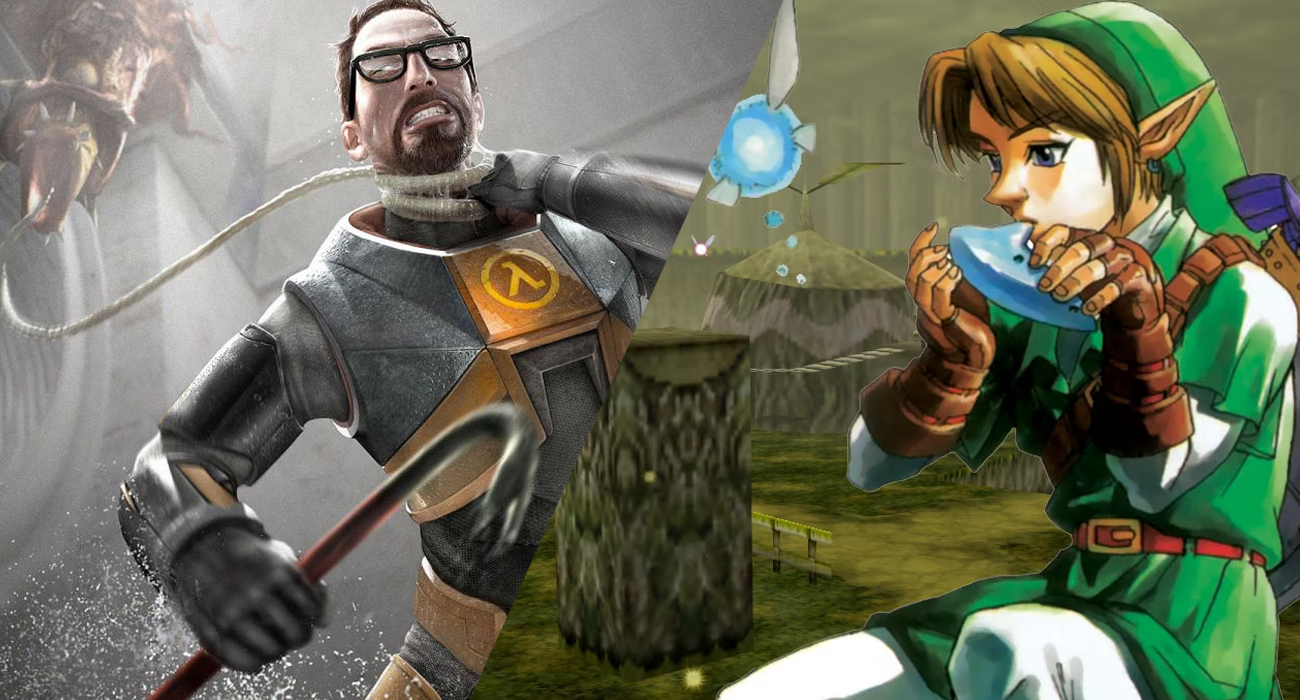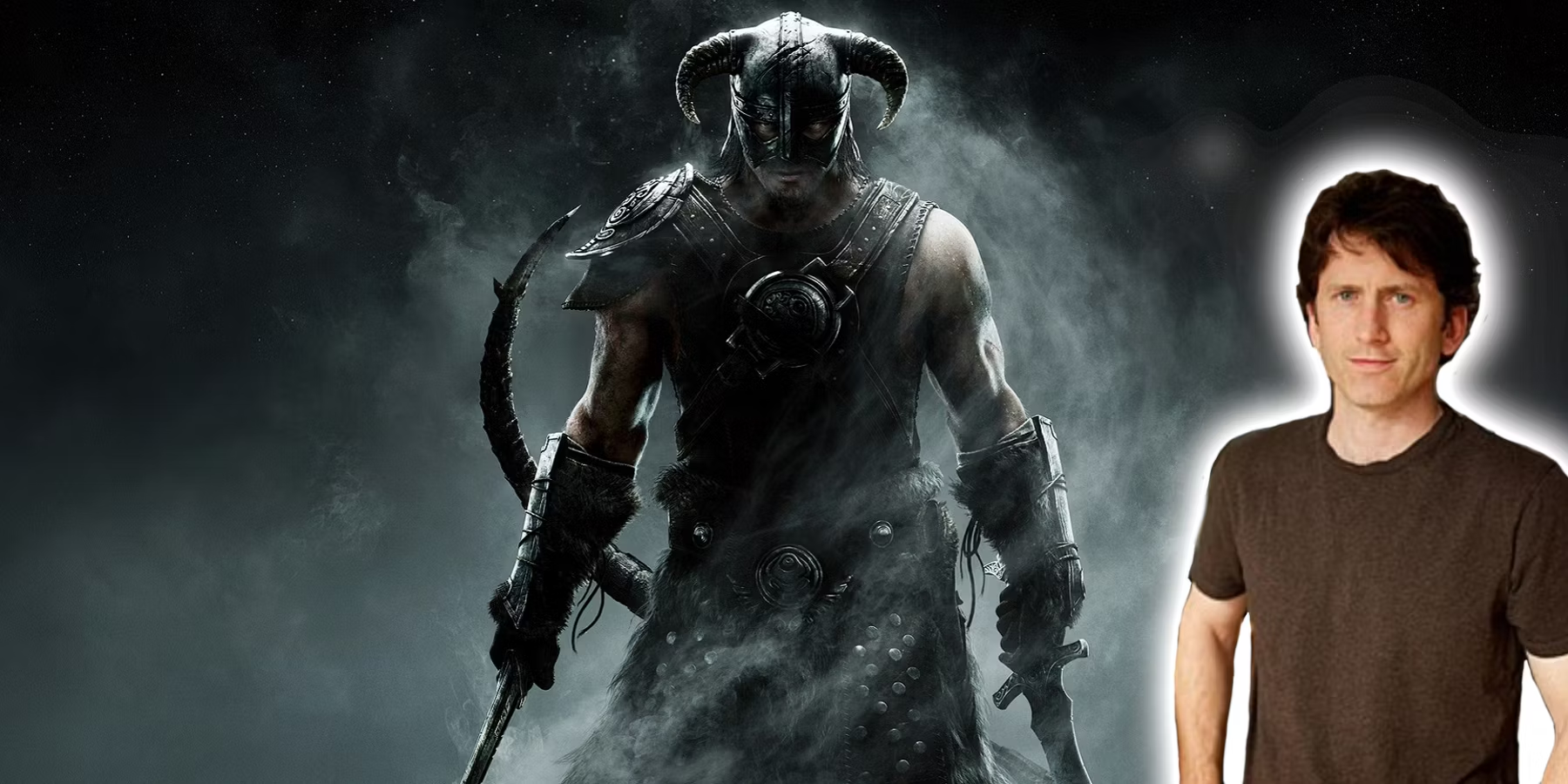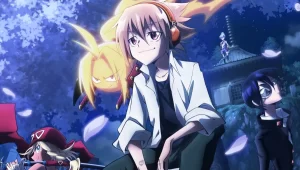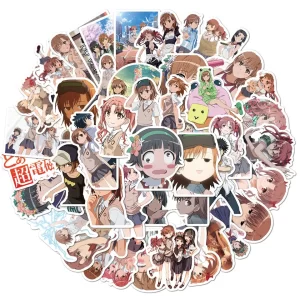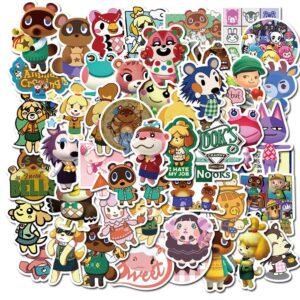November 1998 – one of the most important months in the video game industry.
It was on this month, 20 years ago, that two massively influential video games graced the earth. They were entirely different games – separated by genre, thematic tone, and even the PC/console gap – but in an eerily similar way, they both changed future video games to the same effect. They brought with them a new standard of realism in gaming, which (at the time) was both convincing and compelling. These games are, of course, Nintendo’s The Legend of Zelda: Ocarina of Time, and Valve’s Half-life.
Half-life hit PC-store shelves on the 19th of November, and Ocarina of Time a mere two days later on the 21st. In the span of two days, the world got the first-person shooter that defined what every FPS coming after it would be like, and the Zelda game that masterfully translated the series into 3D and felt like a blockbuster animated film. What came after, in both the PC and console markets, couldn’t help but be influenced by these two titles.
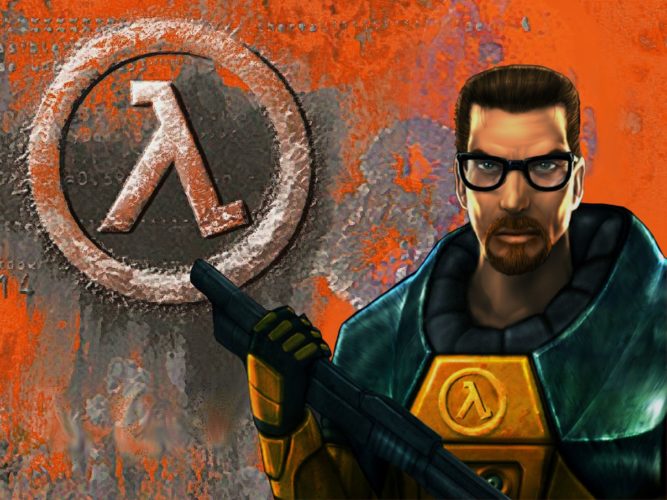
Half-life: Father of the Modern FPS
By the late nineties, FPS’s were on a rapidly rising popularity slope. Id Software’s DOOM, released in 1993, introduced the world to the brilliance of a shooting game played from a first-person perspective. Since then, “doom clones” had flooded the PC market on both Windows and DOS. Games like Duke Nukem 3D and Marathon took the concept and mechanics perfected by DOOM and…frankly, didn’t really do much with them. There was still a lot of DOOM’s run-and-gun action, taking the player from corridor to corridor as they murdered beast after beast. The problem was that DOOM had already perfected that formula, so all of these “Doom clones” that rushed onto the PC scene for a quick cash grab ultimately never stood out. “Doom clone” was a very accurate moniker – but in the mid-nineties, a 30ish-year-old Microsoft employee set out to change all that.
Gabe Newell, a producer for Windows at Microsoft, left his secure job in 1996 to pursue something a bit more uncertain. He strongly believed that DOOM represented the future of video games. As such, he felt compelled to start his own video game company and make his own “Doom clone”. Except, he didn’t want to make a Doom Clone – he wanted to change how people thought of first-person shooters. And that’s exactly what he did.
After a surprisingly short development cycle of only two years (which involved scrapping nearly the entire project halfway through and starting over), Gabe Newell and his team at Valve turned in their homework. Half-life was finished.
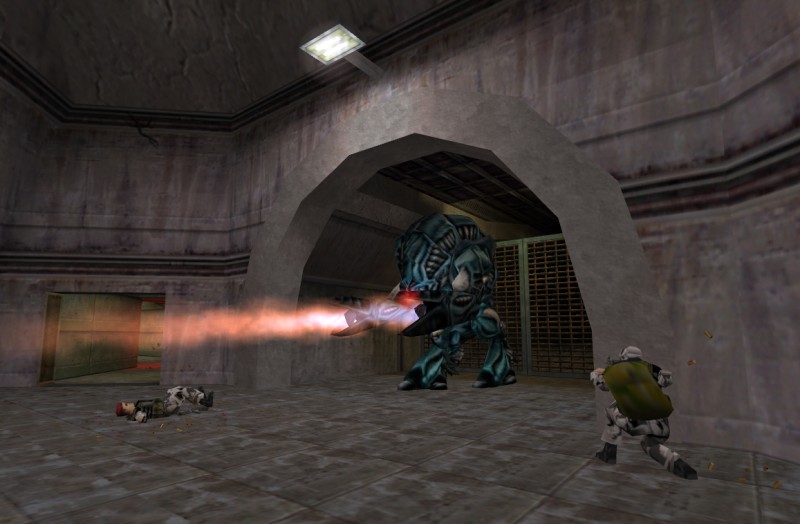 Source: Dualshockers
Source: Dualshockers
Beyond the Clone
Inspired by narrative elements from Die Hard and Evil Dead, Half-life followed the events of silent protagonist Gordan Freeman, a PhD graduate working at a highly-secure science lab called the Black Mesa research facility. One day, everything in the facility goes awry as a portal to another dimension opens and aliens start pouring through. Gordon has to fight and shoot not only the aliens but the US soldiers sent to kill him and any other witness of the event.
Half-life might just be the first time we got to role-play a fleshed-out story, solely from the protagonist’s viewpoint. Half-life wasn’t just a “shooting gallery”, as Gabe Newell jokingly called other FPS’s, it was a world. Valve successfully told a story through environmental cues like an elevator falling down a shaft, a scientist getting shot as he reaches out for help, and dialogue between AI enemies. And all of this is subtly told from the player’s viewpoint, without the use of third-person cutscenes and camera-guiding.
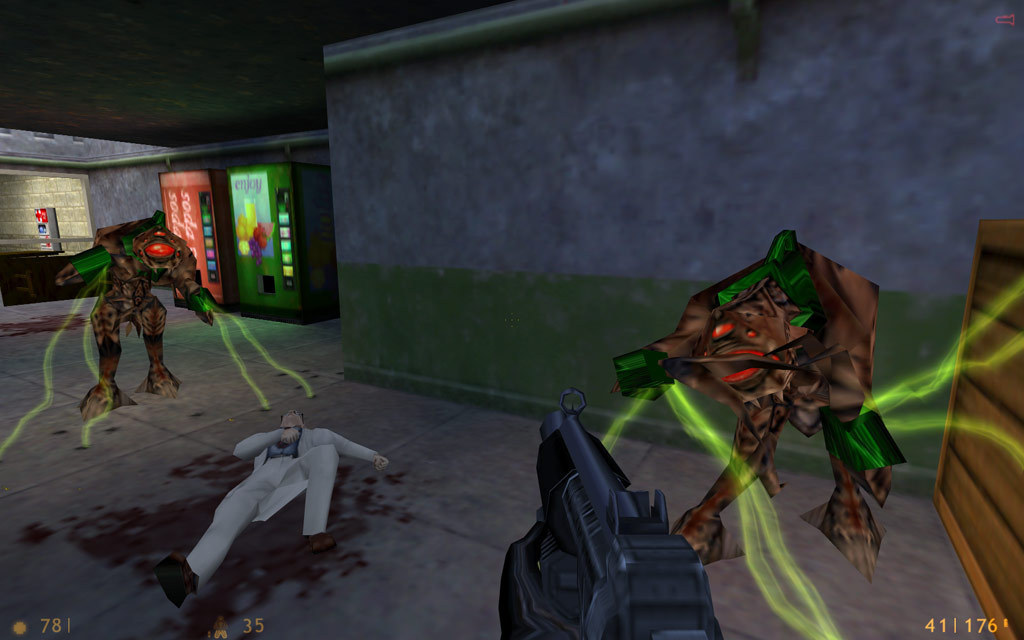 Source: Kotaku Australia
Source: Kotaku Australia
Subtle Guidance
Half-life was also a masterpiece of level design. It subtly led the player through a series of passages, corridors, cliffs, and tunnels that were all thematically different from each other, yet still felt interconnected, similar to Super Metroid or Symphony of The Night. The environmental cues quietly lead the player in the right direction each time. To this day, Half-life’s interconnected world feels natural and intuitive from start to finish.
Half-life changed the way we think of first-person shooter gunplay. All 14 weapons provide their own tactical pros and cons, so it is crucial for the player to take advantage of literally every single firearm in their arsenal. The pistol is perfect for sniping off headcrabs, the shotgun is great for taking care of vortigaunts, and the crossbow works perfectly as a long-distance soldier-neutralizer. And the player picks up each of these weapons in a steady progression as they make their way through the research facility. Essentially, your save state, personal skill, and Arsenal are all upgrading simultaneously as you progress. It’s a near-perfect progression loop that still isn’t tiresome 20 years later.
Half-life marked a turning point for the FPS genre. It was the game that turned “doom clone” into “first-person shooter”. It’s because of Half-life’s fantastic gunplay, world design, and narrative elements that we even have FPS’s today. If DOOM is the grandfather of the FPS, Half-life is DOOM’s son.

Ocarina of Time: A Feat in 3D Translation
Unlike Valve, by 1998, Nintendo was already a very well-established video game developer. They were just coming off the high of the Super NES era, which net them more than 49 million sales, as well as being a central hub for some of the pinnacle games of the generation. And at the top of the SNES heap were Super Mario World and A Link to The Past, still considered by many to be two of the greatest games ever developed.
1998 saw Nintendo in a new era. The days of 2D top-down and side-scrolling games were over – all anyone could think about was the promise of a new generation of 3D graphics. Sony was pushing extra hard on this front, so Nintendo had to push back with their own IP’s. 2 years prior, Shigeru Miyamoto and his team had used Super Mario 64 to bring Mario into the new dimension. Mario 64 became the golden standard for 3D video games for years, and lead the industry into the new dimension with a boldness that few could match.
But between ’96 and ’98, Sony was really starting to up their game with the oh-so-infamous PlayStation. Square deserted Nintendo in ’97 to make Final Fantasy VII for the PS1. Capcom jumped boat and had released Resident Evil 2 just earlier in January ’98. And just a couple months before November, former Nintendo-ally Konami had dropped a bombshell in the form of Metal Gear Solid. Nintendo may have taken the first footstep into the 3D realm, but Sony was quickly following behind with a dozen of their own.
But Nintendo wasn’t down yet. They had brought one of their two hallmark series into 3D with phenomenal success; now it was time for the other to follow suit.

The Legend Goes 3D
The Legend of Zelda: Ocarina of Time came out November 21, 1998. It followed the story of our familiar hero, Link as he traversed the fields of Hyrule, the sands of Zora’s Domain, and through time itself. All of this was to defeat Ganon, the ultimate bane of evil. On the way, he would run into characters from each of the four races: Kokiri, Hylian, Goron, and Zora. These characters would, in turn, provide interesting backstories as they introduced Link to new items and mechanics. For the persistent player, Link would eventually make it to Ganon’s castle and face him down in what just be the most climactic final video game boss of all time.
Ocarina was a revelation. It balanced player freedom and linear guidance hand-in-hand, letting the player explore the (at the time) vast plains of Hyrule, then funnelling them narrow town or puzzle-laden dungeon. It’s quite similar to how A Link to The Past’s expertly-paced progression guided and freed players seven years earlier. In fact, Ocarina is more similar to Link to The Past than Mario 64 is to Mario World.
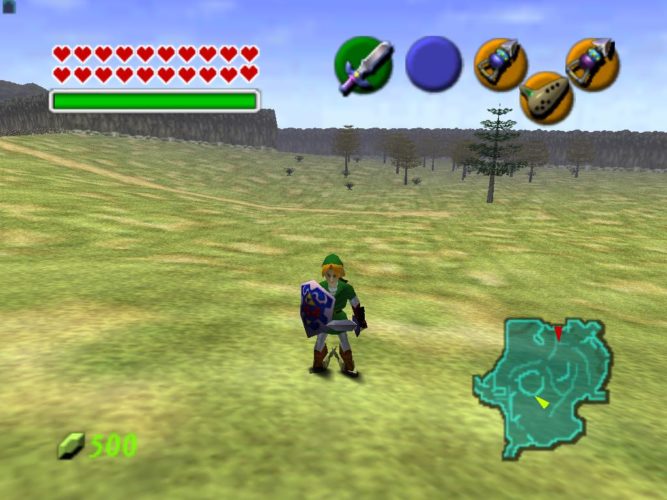 Source: Electric Perfume
Source: Electric Perfume
Perfecting the Perfected
Ocarina had some of the best puzzle and dungeon design in a Zelda game up to that point. The water temple, as infamous as it is, is still to this day one of the Zelda series’ best dungeons. Lowering and raising the water level based on the current situation required a great deal of foresight and planning. In fact, there are puzzles littered all over the world that require the player to think outside the box. Whether it be outsmarting the lazy farmer Ingo to get Link’s horse, Epona back, or traveling back and forth in time to reach out-of-place heart pieces, Ocarina is filled with moments that will make any player scratch their head.
3D combat might just be Ocarina of Time’s greatest achievement. It takes the combat introduced by Zelda II (of all games) and adds in a little game mechanic called Z-targeting. Never heard of it? It’s that moment when you lock onto a skeleton in Dark Souls or an outlaw in Red Dead Redemption 2. Yeah, Ocarina of Time perfected that concept first. Imagine what if would have been like trying to fight an enemy without being able to hone in on them. Nintendo’s innovation allowed them to create an entirely new concept – they’ve done that more than once.
Like Mario 64 before it, Ocarina of Time was the perfect translation from one dimension to the next. It was one of the last times that Nintendo was at the forefront of a technological movement, and their efforts can still be felt in nearly every 3D game that comes out today.
Half-life’s and Ocarina of Time’s Legacy
Both these games came at a pivotal time in the video game medium. The entire industry making the shift into the 3D space, and was transitioning towards a cinematic, Pixar-level narrative experience. Final Fantasy VII, Resident Evil 2, Silent Hill, and Metal Gear Solid were key factors in that movement. But arguably, Half-life and Ocarina were the pinnacles of story-telling in that era.
Half-life told its dismal, catastrophic story through environmental cues and player interaction. Ocarina told its bleak, yet triumphant story through delightful character vignettes and heartfelt interactions. Half-life presented an ever-progressing world to the player through masterful, discreet level design. Ocarina presented an ever-expanding world through a series of inter-connected biomes the player could explore at will. Half-life made us feel like John McClain. Ocarina made us feel like… well, Link.
Both games exceeded abundantly on their own terms. They influenced video game story-telling and 3D mechanics in the same way Super Mario Bros 3 influenced side-scrolling platformers or Final Fantasy 4 influenced epic video game narratives. But where Mario 3 thrived on excellent linear level design, Ocarina thrived on an immersive, open-ended world design. Where FF4 presented a character-driven narrative, Half-life presented an atmosphere-driven narrative.
Different Routes, Same Goal
Structurally, thematically, and mechanically, Half-life and Ocarina of Time were and still are very, very different video games. They appealed to separate audiences preferring separate genres on separate hardware. But in retrospect, there’s no doubt that these games ultimately affected the industry, and the medium itself, to the same end. They presented worlds that hadn’t been possible to create even five years prior, pushing us one enormous step closer to the caliber of immersive 3D video games that have become so prominent today.
Twenty years later, we have games like Red Dead Redemption 2 and Breath of The Wild that stem from the open-world beginnings of Ocarina of Time. We have linear first-person games like Call of Duty: Modern Warfare and Portal that came from the progression and atmosphere the original Half-life portrayed. It’s hard to imagine the modern video game landscape without the foundations these games laid. It would certainly be a different world.
A Monumental Week
Imagine being lucky enough to own both a Nintendo 64 AND a moderately-powerful PC in mid-November of ’98. You grabbed your CD-ROM of Valve’s highly-anticipated FPS, then marathoned through Black Mesa’s Halls over the next two days. Then, you put down the mouse and gave Nintendo’s latest 3D game a shot. You spent the next week or two roaming the fields of Hyrule and banishing Ganon to the sacred realm.
Half-life on Thursday, Ocarina of Time on Saturday. Sounds like a pretty decent weekend to me.
Now go recreate that weekend by playing one or both games on Steam. If you’ve never played them, you have no idea what you’re missing. If you’ve already played them a dozen times, they’re still worth revisiting a dozen more.




